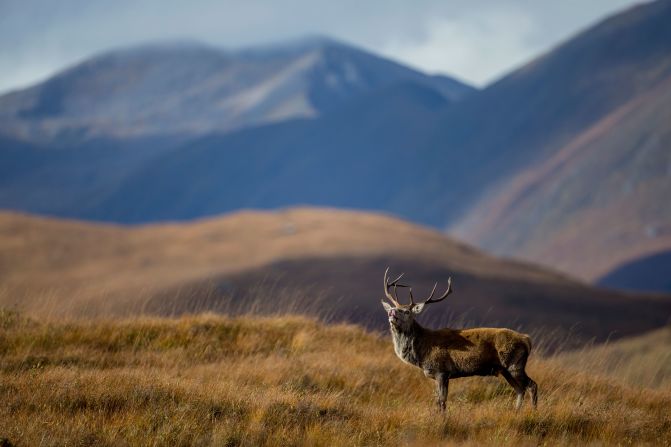
Thousands of years ago, wolves and brown bears roamed the rugged hills of Scotland, and lynx prowled through heather. But these predators are long gone, as is the forest that swept over most of the country's landscape. Today, native woodland covers just 4% of land area, and red deer (pictured) are the country's largest wild land mammal.

Efforts to restore ancient ecosystems are underway, for instance Cairngorms Connect. This land restoration project covers 64,000 hectares within the Cairngorms National Park.

The project aims to expand woodland to its natural limit and restore floodplains and peatland. Peatlands (pictured here in Forsinard, Scotland) make up a fifth of the Scottish landscape and are huge carbon sinks.

Restoring habitats allows wildlife to thrive. Over 5,000 species have been recorded in the Cairngorms Connect area, many of them rare. Here, an osprey is pictured clutching its prey.

Red squirrel (pictured), pine martens, otters and wildcats can also be spotted within the Cairngorms Connect territory. The vastness and connectivity of the area benefits biodiversity, allowing for ecological corridors.

The icy alpine peaks of the Cairngorms have a totally different, harsher environment. Efforts are underway to restore high altitude woodland.

The reintroduction of lost species is also a key talking point when it comes to rewilding Scotland. Beavers, which were hunted to extinction during the 16th century, have been brought back, with examples at the Bamff Estate in Perthshire and Knapdale Forest in Argyll (pictured).

Reintroducing the European lynx (pictured here in Norway) has also been suggested by environmental groups, who say the carnivorous predator would help to control deer populations and enrich ecosystems. But the Scottish government says it has no plans to introduce the big cats.
